The Dream of the Deep Stone Crypt
by Onsyzygy — 2020.10.28
Hive runes draw their power from a different dimension, where there’s no difference between a word and its meaning. When the Hive erode the barrier between our dimension and theirs, the rune for ‘death’ brings literal death.

The Hive writing system is comprised of runes, similar to ancient Egyptian hieroglyphs. From what we know so far, the Hive glyphs are a logographic system, meaning each glyph represents an idea, such as the glyph above meaning ‘door’.1 This rune appears on most doors to locked ritualistic areas, such as the door to the Temple of Crota on the Moon in the mission ‘The Dark Beyond’.
In total, the language of the Hive encompasses 35 glyphs. It is comprised of:

The Hive ‘Alphabet’ sigil (The term alphabet is used loosely here as it seems the Hive do not actually have an alphabet) has a total of 18 character glyphs and 5 linear glyphs, which shall be referred to as the 23 “base glyphs” for their common usage by the Hive.
This sigil, in particular, is in the Hall of Exalted in the Jetsum of Saturn, where you find a secret chest after defeating the Mindbender.
The base glyphs were first independently found on the Dreadnaught and the Moon on various consoles. Each dial on the console was a ‘row’ of the sigil.

For example on the Dreadnaught, in the Hull Breach (as seen above), there is a console used to summon hive with the Wormsinger Rune. This console has the 5th, 1st, 3rd and 4th row of the sigil. There is another console in the Asylum which is used with the Agonarch Rune. This one has the 5th, 1st 2nd and 3rd row of the sigil. If you put the two together, you get the alphabet sigil present in Destiny 2.
The base glyphs are used on a variety of things including Shriekers, hadium flake chests on the Dreadnaught, and Tomb Husks.
 |
 |
 |
 |
 |
 (Door/ (Door/ |
 |
 |
 |
 |
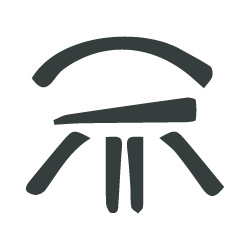 (Haste/ (Haste/ |
 |
 |
 |
 |
 |
 |
 |
||
 |
 |
 |
 |
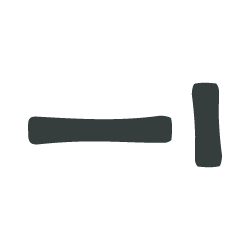 |

Independent of the ‘alphabet’ sigil, there are also the Court Of Oryx Runes. These runes are only present on the Dreadnaught in the Court of Oryx area, Hall of Souls. The runes are used to summon various ascendant Hive, which are members of Oryx’s High War. There are three tiers of Court of Oryx: Reciprocal, Stolen, and Antiquated.
 (Reciprocal) (Reciprocal) |
 (Stolen) (Stolen) |
 (Antiquated) (Antiquated) |

Also present in the Hall of Souls is the Interloper Ritual, where various Hive are praying and speaking in a ritualistic fashion. Above the room where the ritual is held, there are various glowing Hive runes. These Hive runes are various combinations of the Court of Oryx runes.
 (Stolen + Antiquated) (Stolen + Antiquated) |
 (Reciprocal + Antiquated) (Reciprocal + Antiquated) |
 |
 (Reciprocal + Stolen + Antiquated) (Reciprocal + Stolen + Antiquated) |

On the cover of the Lore book, For Every Rose a Thorn, there are new Hive runes (circled in lavender). They are the same style of runes as the ones found on the ‘alphabet’ sigil and Court of Oryx runes, with an additional new type of rune: half runes. It is possible that the Shadows of Yor discovered new runes as they translated the Hive Tome found on Dredgen Yor’s ship.
 |
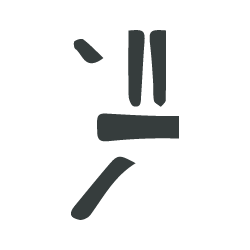 |
 |
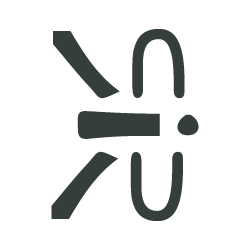 |
While the language itself is the same in Destiny 1 and 2, the general use and form are different. Oryx was more practical and orderly with the structure and placement of the runes, while his scheming sister, Savathun is more chaotic and unruly.

The majority of the Hive runes uncovered were originally discovered on Luna and Dreadnaught. The structure and use of the runes are very rigid, suggesting uniformity and purpose. This could be a reflection of Oryx, as he prided himself on having order in his family. This is also evident in the King’s Fall raid during the Warpriest and Gogorth encounters, as the Hive tablets that are used are structured in a grid-like fashion.
The Court of Oryx runes and their use in the Interloper Ritual show the additive nature of the Court and are a reflection of Oryx’s decree upon creating the court:
“I shall establish a court, and whoever comes into this court may challenge me. My court will be the High War. It will be a killing ground and a school of the sword logic we have learned from our gods.”

The use of the Hive Runes on Titan show a completely different system than the ones on the Dreadnaught. Specifically, in examining the Savathûn’s Song Strike, the runes on the void pedestals and the center pedestal prior to the boss fight. The fluid use of the runes could illustrate Savathûn’s innate nature to be cunning: she bends the rules and use of the Hive runes. This ‘bending’ of the rules might hint at her endgame plan. If Truth to Power is to be believed, she is attempting to end her reliance on the tribute system, and instead use a new system called Imbaru, where every failure to understand her makes her more powerful.

With the introduction of Nokris, the heretic son of Oryx, the runes on his robes are not a part of the alphabet, but instead, look very archaic and look similar to the runes seen on the Cathedral of Dusk crucible map in Destiny 1. It is possible that the runes used in the Cathedral of Dusk and the ones used by Nokris are an archaic version of the Hive runes that we see on the Dreadnaught. It is also possible that this tablet is explaining how Oryx communed with the Deep itself since the Cathedral of Dusk is deep in the Dreadnaught, and Nokris also communed with the Deep to make his pact with Xol. The symbol at the top of the tablet means ‘jewel’, and that same symbol is on numerous banners on the dreadnaught, which could mean that this tablet has some significance to Oryx and the Hive.

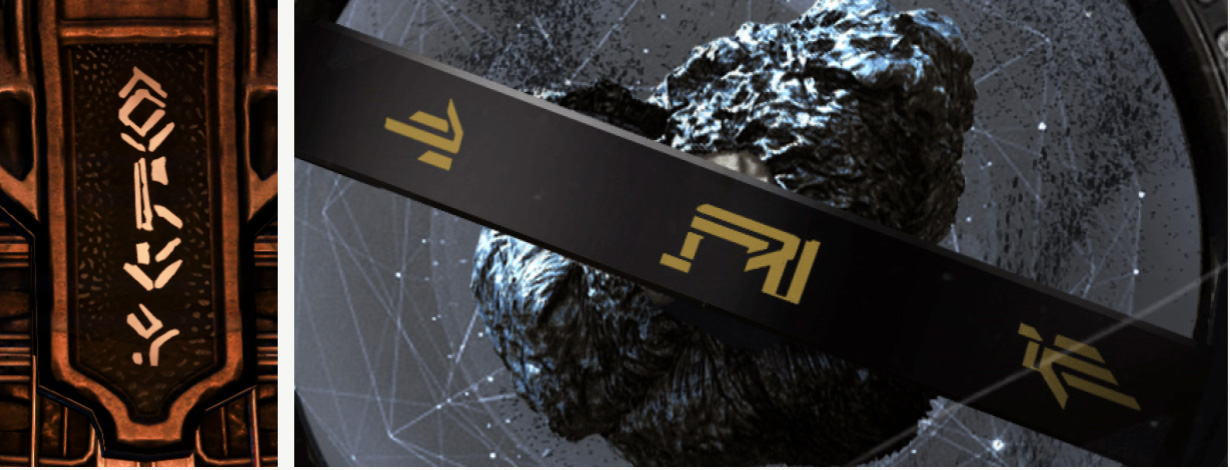
The Touch of Malice and the Cauldron Map in Destiny 1 both share similar versions of runes. They are different than the ones present on the Dreadnaught, which could relate to a more modern version of the Hive runes, similar to how Archaic Egyptian became Egyptian Hieroglyphics, which eventually became Hieratic (Cursive Hieroglyphs) as a way to write the glyphs concisely and with fewer strokes. Hieroglyphics were still used but for religious and important ceremonies such as tombs and monuments to their gods.
My theory is that the difference in Hive dialects is similar to the difference in Egyptian dialects. The Temple of Crota and the Shrine of Oryx on the surface of the Moon are much younger than the Dreadnaught, and the Hive Runes are still in use for ritualistic nature on the Moon and Titan:
| Nokris/Cathedral of Dusk | → | Hive Runes on Dreadnaught | → | Touch of Malice/Cauldron |
| Archaic Egyptian | → | Egyptian Hieroglyphics | → | Hieratic |

If the Hive language is truly a logographic language then it is possible that some runes serve as semagrams (semantic symbols that specify meaning), since some of the logograms have different meanings depending on the context, such as the rune above having a variety of meanings: ‘haste/lies’1 or ‘doorway/treasure/chamber’.2 To know which meaning is used, a rune might be placed beside it to add connotation. This might be the purpose of the previously mentioned half runes, as most semagrams are few strokes.
“What may seem like a void between their shrieks, holds, what I believe to be yet another clue to their origins. In one tone the Hive plea to their gods, but in the next, they whisper to another. Perhaps it is here which holds the answer to their ultimate demise, or a bridge to their desires. In my studies, I still struggle to match the tones to their rune system.”
The drawback to having a logographic language is the logogram or character is separate from the pronunciation. However, from the grimoire of the various high ranking Hive, we have a few words translated:
| Word | Meaning | Source |
|---|---|---|
| Malok | My Poison | Malok, Pride of Oryx |
| Lokaar | Not There | Lokaar |
| Vorlog | Less Than Me | Vorlog |
| Auryx | Long Thought | X: Immortals |
| Aiat | An Expression that is a question and its own answer | Quote from Seth Dickinson |
Unless we get an ascendant Hive willing to speak and help us understand their language, (similar to Variks translating Skolas’ speeches in the House of Wolves), or something similar to the real-life Rosetta Stone, the translation of the Hive Language will be extremely difficult. It would be interesting if we were able to examine the Cryptarch’s work on Hive runes; it is evident that some Cryptarchs, such as Crytparch Adonna, have at least attempted to crack the code on the Hive language.